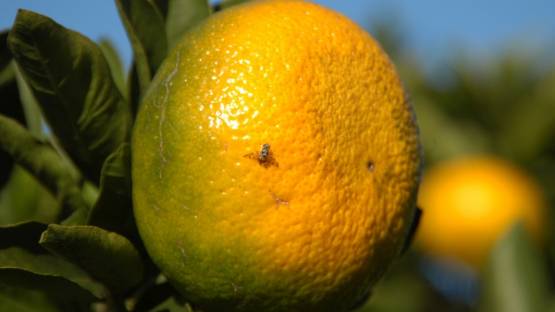In 2019, twenty-four years after Chile declared itself Mediterranean fruit fly (medfly) free, the country experienced one of its largest outbreaks — costing the economy approximately US$ 5 million. Worried about future outbreaks, which are caused by the movement of people and fruit from countries where the medfly is present, in 2020 Chile’s Agricultural and Livestock Service (SAG), in collaboration with Argentina’s National Food Safety and Quality Service (SENASA), the IAEA and the Food and Agriculture Organization of the United Nations (FAO), decided to apply the sterile insect technique (SIT) as a preventive measure.
In the north of the country, at Arica, Chile is producing sterile flies to be released over areas at risk of outbreaks in the Metropolitan Region of Santiago. These locally produced sterile flies are complemented with imported medflies from a facility in Argentina. By mating with the wild female population, the sterile insects reduce the number of offspring, resulting in rapid gradual elimination. When used as preventive measures, they eliminate emerging population as soon as they arise.
“By using the SIT for prevention, we’ve successfully reduced the number of outbreaks and reduced the use of environmentally harmful conventional methods such as chemical applications by 60 per cent,” said Jocelyn Elena Yevenes Flores, Head of the Fruit Flies Sub-department at SAG.
In Argentina, SIT has been applied as a preventive strategy since 2005. Today, the preventive releases of sterile flies in the country is done over 34,700 hectares of land, including in fruit fly pest free areas of Mendoza and Patagonia. Between 1,500 to 4,500 sterile males are released per hectare two to three times per week. These flies are mass-reared and sterilized at the Santa Rosa facility of the Agricultural Health and Quality Institute (ISCAMEN)’s located in Mendoza.
The facility is the largest Mediterranean fruit fly mass rearing facility in South America, with a production capacity of 700 million sterile male flies per week. Moreover, a Fly Emergence and Release Facility, located in south of the Mendoza Province, has a capacity to process 500 million sterile flies per week — a strategic link in supplying sterile flies needed in Mendoza and Patagonia.
Pre-emptively applying the SIT is an environmentally friendly mechanism which prevents the introduction and initial spread of medflies before they start harming agricultural areas.






